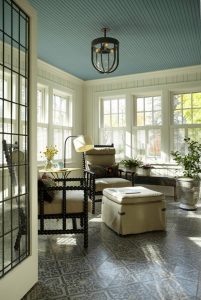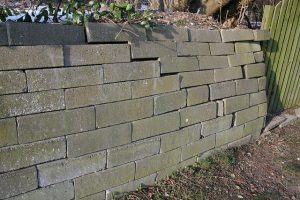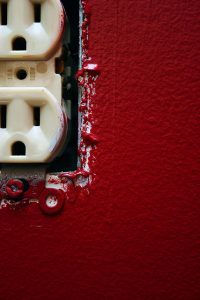You may remember a cartoon on TV from the early ‘60s, which was set in a future, where large flat panel TVs came down from the ceiling, people communicated by video conferencing and they used mobile communicators. It was called The Jetsons. Believe it or not, much of the ama ing technology from the show already exists and many of us use it every day. Those flat TVs that came down from the ceiling in the show – I get to install those! My business is about integrating the latest technology to other people’s homes and businesses. One of the technologies I’d like to talk about in this article is home automation, also known as a “smart home”.
The terms “home automation” and “smart home” have been used so much over the past several years, but many  people don’t understand what they mean or why they’re useful. That’s a shame, because there are many benefits home automation has to offer. To put it simply, home automation is all about controlling things. I’m not talking about control in the traditional sense, where you walk up to a light switch and turn it on, but other ways of controlling things. Before I get into how you can control things, I’d like to talk about some of the things you can control.
people don’t understand what they mean or why they’re useful. That’s a shame, because there are many benefits home automation has to offer. To put it simply, home automation is all about controlling things. I’m not talking about control in the traditional sense, where you walk up to a light switch and turn it on, but other ways of controlling things. Before I get into how you can control things, I’d like to talk about some of the things you can control.
You may be surprised to know how many things that are currently available and can be controlled by home automation systems. Some of the more common items include: lights, thermostats, shades, and audio/video systems. Then, there are some things you probably would have never guessed that you can control – like an oven!
 Ok, so you can control any of those things now, by going up to them and pressing a button or turning a knob. With home automation, there’s a big difference – you don’t always need to go up to each device to make them work. The main idea is that “automation” makes things happen automatically. That’s where part of the magic comes in. This type of control is best described using lighting as an example. Many lighting automation systems have a controller, which includes something called an “astronomical clock”. What it does is pretty interesting. You can think of it as a timer, but unlike traditional timers, an astronomical clock knows when the sun comes up and when it goes down, regardless of what season it is. This type of intelligence eliminates the need to make seasonal adjustments for longer or shorter daylight hours. This is a huge benefit. Here’s one popular way lighting automation is used. Let’s say you like to have outdoor lights turn on at night, so your pathway is lit when you get home from work, they can automatically be set to do so. When the sun starts to go down, the lights come on. When the sun starts to come up, the lights can automatically turn off. Not only is it great for security, but also for the safety of having a well-lit pathway in the dark. Of course, there are potential energy saving benefits to have lights turn on and off at the appropriate times as well, particularly if dimmers are used instead of regular switches.
Ok, so you can control any of those things now, by going up to them and pressing a button or turning a knob. With home automation, there’s a big difference – you don’t always need to go up to each device to make them work. The main idea is that “automation” makes things happen automatically. That’s where part of the magic comes in. This type of control is best described using lighting as an example. Many lighting automation systems have a controller, which includes something called an “astronomical clock”. What it does is pretty interesting. You can think of it as a timer, but unlike traditional timers, an astronomical clock knows when the sun comes up and when it goes down, regardless of what season it is. This type of intelligence eliminates the need to make seasonal adjustments for longer or shorter daylight hours. This is a huge benefit. Here’s one popular way lighting automation is used. Let’s say you like to have outdoor lights turn on at night, so your pathway is lit when you get home from work, they can automatically be set to do so. When the sun starts to go down, the lights come on. When the sun starts to come up, the lights can automatically turn off. Not only is it great for security, but also for the safety of having a well-lit pathway in the dark. Of course, there are potential energy saving benefits to have lights turn on and off at the appropriate times as well, particularly if dimmers are used instead of regular switches.
Besides timers, there are some other types of controls often used for home automation. Possibly the most common  are handheld remote controls. These can range anywhere from a dedicated remote for controlling a single item, to a universal remote, which can control a whole house worth of thermostats, lights, shades, TVs and more. There are also in-wall controls, such as keypads and full-color touch screens. The in-wall controllers are typically placed in various convenient locations, so you can control any part of your automation system from anywhere in the house and not worry about where the handheld remote is. Last, but not least, are the third-party.
are handheld remote controls. These can range anywhere from a dedicated remote for controlling a single item, to a universal remote, which can control a whole house worth of thermostats, lights, shades, TVs and more. There are also in-wall controls, such as keypads and full-color touch screens. The in-wall controllers are typically placed in various convenient locations, so you can control any part of your automation system from anywhere in the house and not worry about where the handheld remote is. Last, but not least, are the third-party.
 One of my favorite things about home automation is that it doesn’t need to be incredibly expensive and is often modular. What that means is you can do a little at a time if you are on a budget and build it up over time. Modern wireless technology has made installation much more convenient and hassle-free, compared to older systems. When replacing thermostats or light dimmers with ones capable of being controlled by a home automation system, no new wiring is necessary with many systems. This will save a lot of money on installation labor.interfaces. Some examples of these interfaces include: iPod, iPad, smartphones and web browsers. These are extremely useful, particularly if you are out of the house, need to check on a second home or just can’t be there in person. You simply go to a secure web page, which can look like the screen on the controllers you may already be used to, and check on the temperature, turn lights on or off, or even set the alarm while you’re away. It’s all incredibly convenient and efficient. Possibly the most important part is that it can be very, very easy to use, even for those who are not tech-savvy.
One of my favorite things about home automation is that it doesn’t need to be incredibly expensive and is often modular. What that means is you can do a little at a time if you are on a budget and build it up over time. Modern wireless technology has made installation much more convenient and hassle-free, compared to older systems. When replacing thermostats or light dimmers with ones capable of being controlled by a home automation system, no new wiring is necessary with many systems. This will save a lot of money on installation labor.interfaces. Some examples of these interfaces include: iPod, iPad, smartphones and web browsers. These are extremely useful, particularly if you are out of the house, need to check on a second home or just can’t be there in person. You simply go to a secure web page, which can look like the screen on the controllers you may already be used to, and check on the temperature, turn lights on or off, or even set the alarm while you’re away. It’s all incredibly convenient and efficient. Possibly the most important part is that it can be very, very easy to use, even for those who are not tech-savvy.
Here are a couple of situations our customers have had, where home automation helped them.
Situation 1 – Lights Out: One of my customers was driving home from a long day at work. The sidewalk and  driveway were covered in snow, but he forgot that no one would be home to turn the outside lights on, so he didn’t slip on the ice.
driveway were covered in snow, but he forgot that no one would be home to turn the outside lights on, so he didn’t slip on the ice.
Solution: Automated lighting. Many home automation systems know when the sun comes up and when it goes down. This is called an “astronomical clock”. It can be set to turn the lights on at night and off in the day. Some of them can even turn themselves on, based on how much light there is. With these types of systems, there is no need to worry about it. A small remote control, similar to a garage door opener, can even be programmed to turn certain lights on and off from the car.
Situation 2 – Free ing Pipes: A couple packed up their vacation home in the fall and would not be back until the spring. Unfortunately, they forgot to turn the heat up and some of the pipes fro e, causing a lot of water damage and expense for them.
 Solution: Climate control. There are thermostats available, which have been designed to work with home automation systems. They can be set to be at certain temperatures at certain times of the day. With internet access and a web browser, a homeowner can check the temperature in their house and change it if they’d like. Some systems can be programmed to send an e-mail, if the temperature drops too low or goes too high. As long as the system is running, there’s no need to make a special trip or worry about a pipe bursting.
Solution: Climate control. There are thermostats available, which have been designed to work with home automation systems. They can be set to be at certain temperatures at certain times of the day. With internet access and a web browser, a homeowner can check the temperature in their house and change it if they’d like. Some systems can be programmed to send an e-mail, if the temperature drops too low or goes too high. As long as the system is running, there’s no need to make a special trip or worry about a pipe bursting.
For those who prefer a slightly more “hands-on” approach, here are a couple of other common examples. When you  go to bed, you can press a button to set everything the way you want it. Have all the lights turn off, except for a select few that you keep just bright enough to light your path if you happen to get up at night. Motori ed shades close. The thermostats adjust, so you save energy while you sleep. Finally, your alarm system activates, so you can rest easy. When you get up, another button press deactivates the alarm, the shades open, lights adjust to your morning routine and thermostats set to the temperature you want when waking up.
go to bed, you can press a button to set everything the way you want it. Have all the lights turn off, except for a select few that you keep just bright enough to light your path if you happen to get up at night. Motori ed shades close. The thermostats adjust, so you save energy while you sleep. Finally, your alarm system activates, so you can rest easy. When you get up, another button press deactivates the alarm, the shades open, lights adjust to your morning routine and thermostats set to the temperature you want when waking up.
Automation can simplify your life and help make your home more efficient. The possibilities are endless.
There are several companies out there who strictly develop, produce and sell automation and control products. Crestron, a 40-year-old US-based company, is noted for being the most highly respected brand and a leader in the industry.
Guest Post By:
Damon Della Greca, owner of Premier Audio Video Designs, based in Westchester, NY. Damon has been involved in pro audio since 1991 and in the consumer electronics industry since 1998.
Understanding Home Automation (aka Smart Home)


































